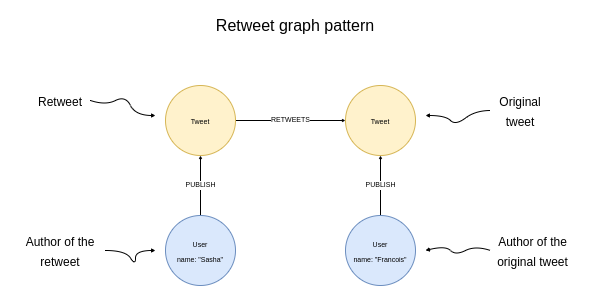This chapter covers
- Translating an indirect graph pattern into a direct relationship
- Using Cypher projection to project an in-memory graph
- Ignoring self-loops with Cypher projection
- Introducing weighted variant of Degree centrality and PageRank algorithms
In the previous chapter, you performed a network analysis of the Twitter follower network. The decision to start with the follower network was straightforward. Most graph algorithms are designed to be executed on a monopartite network, meaning only a single node and relationship type are present. However, the Twitter social network schema contains multiple node types and relationships. Instead of adjusting graph algorithms to support multipartite networks (multiple node and relationship types), the general approach is to first project a monopartite network (single node and relationship type). I have briefly alluded to this concept in Chapter 2, where I presented some options on how to infer monopartite projections on the Twitter social network.
Suppose you want to analyze the retweet network and find the most influential users based on how often their tweets get retweeted by other users. More often than not, you want to use the PageRank algorithm to identify the most important nodes in the network. You chose the following graph model to represent the retweet pattern in the Twitter social network.
